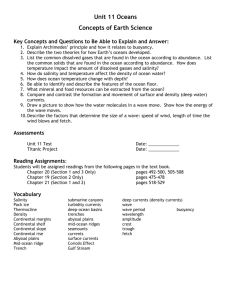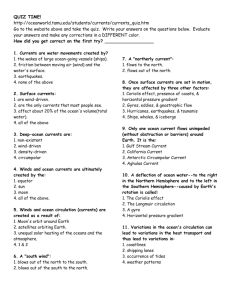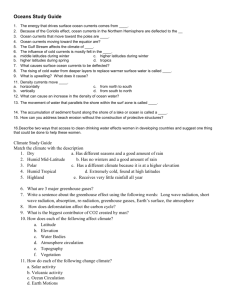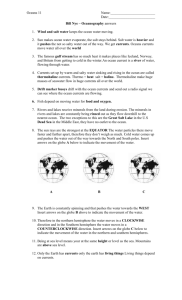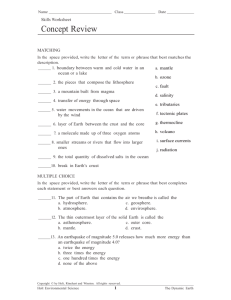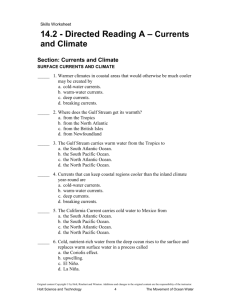UC APES Ocean Current Summary - Liberty Union High School
advertisement
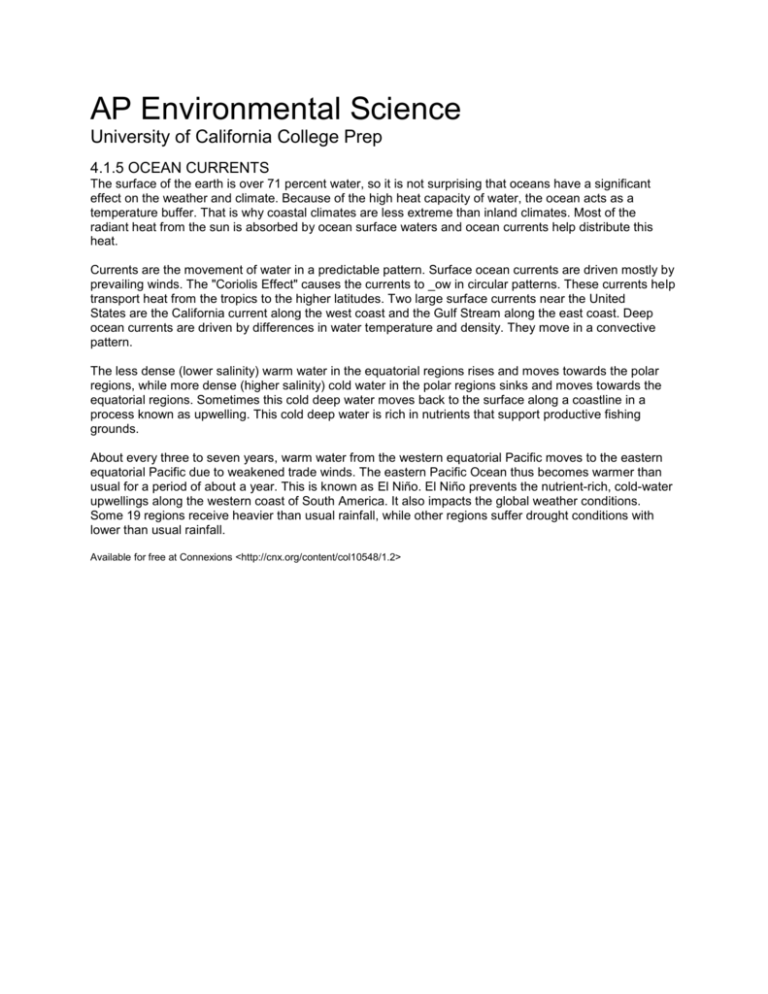
AP Environmental Science University of California College Prep 4.1.5 OCEAN CURRENTS The surface of the earth is over 71 percent water, so it is not surprising that oceans have a significant effect on the weather and climate. Because of the high heat capacity of water, the ocean acts as a temperature buffer. That is why coastal climates are less extreme than inland climates. Most of the radiant heat from the sun is absorbed by ocean surface waters and ocean currents help distribute this heat. Currents are the movement of water in a predictable pattern. Surface ocean currents are driven mostly by prevailing winds. The "Coriolis Effect" causes the currents to _ow in circular patterns. These currents help transport heat from the tropics to the higher latitudes. Two large surface currents near the United States are the California current along the west coast and the Gulf Stream along the east coast. Deep ocean currents are driven by differences in water temperature and density. They move in a convective pattern. The less dense (lower salinity) warm water in the equatorial regions rises and moves towards the polar regions, while more dense (higher salinity) cold water in the polar regions sinks and moves towards the equatorial regions. Sometimes this cold deep water moves back to the surface along a coastline in a process known as upwelling. This cold deep water is rich in nutrients that support productive fishing grounds. About every three to seven years, warm water from the western equatorial Pacific moves to the eastern equatorial Pacific due to weakened trade winds. The eastern Pacific Ocean thus becomes warmer than usual for a period of about a year. This is known as El Niño. El Niño prevents the nutrient-rich, cold-water upwellings along the western coast of South America. It also impacts the global weather conditions. Some 19 regions receive heavier than usual rainfall, while other regions suffer drought conditions with lower than usual rainfall. Available for free at Connexions <http://cnx.org/content/col10548/1.2>



